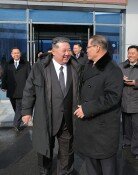Home buyers in 30s and 40s reduce consumption due to high interest rates
Home buyers in 30s and 40s reduce consumption due to high interest rates
Posted February. 26, 2024 07:56,
Updated February. 26, 2024 07:56
With the base interest rate at 3.50% per year for over a year, individuals in their 30s and 40s who have taken on housing debt have borne the brunt of high interest rates. Overall private consumption has declined due to the interest rates, but those in their 30s and 40s are experiencing the most pronounced reduction in purchasing ability.
In the report titled 'Examination of the Consumption Impact of Rising Interest Rates Considering Household Interest Rate Exposure (Risk Exposure),' published on Sunday, the Bank of Korea highlighted, "There was a discernible divergence among households in terms of financial outcomes resulting from the escalation in interest rates." The Bank categorized households based on their susceptibility to interest rate hikes into groups labeled the 'loss class,' 'vulnerable class,' and 'benefit class' from such increases. Notably, individuals in their 30s and 40s were predominantly classified as the loss class amid rising interest rates. Their income tended to be concentrated within the upper middle class (4th to 7th decile), while consumption patterns were predominantly observed in the upper class (6th to 10th decile).
Indeed, the analysis revealed a significant downturn in consumption among the loss class in 2022, with a decrease exceeding 10% compared to three years prior. This group exhibited a notably high homeownership rate, standing at 79%, which surpassed the average for all households at 69%. Moreover, their debt profile indicated a heavy reliance on real estate mortgage loans, accounting for 58.8% of their debt burden, surpassing the overall household average of 50.4%. Jeong Dong-jae, head of the macro analysis team at the Bank of Korea's research bureau, commented, "Households burdened with higher levels of debt are more likely to fall into the loss class, particularly those who have made significant investments in real estate."
The Bank of Korea's assessment indicated that the nominal lending interest rate for households has surged by approximately 2-3% compared to pre-interest rate hike levels, with the real interest rate also experiencing a rise of about 1.5 percentage points. This trend underscores the phenomenon known as the 'intertemporal substitution' effect, wherein increasing interest rates dampen consumption. According to the Bank of Korea's analysis, for every one percentage point increase in interest rates, the growth rate of household consumption diminishes by 0.32 percentage points. Over the observed period, the interest rate hike exacerbated the substitution effect by 0.26 percentage points, resulting in an additional 20% reduction in overall consumption.
신아형 abro@donga.com




![[단독]임성근, 4차례 음주운전 적발…99년 집행유예 기간 중 무면허 음주 적발](https://dimg.donga.com/c/138/175/90/1/wps/NEWS/IMAGE/2026/01/20/133195400.1.png)


